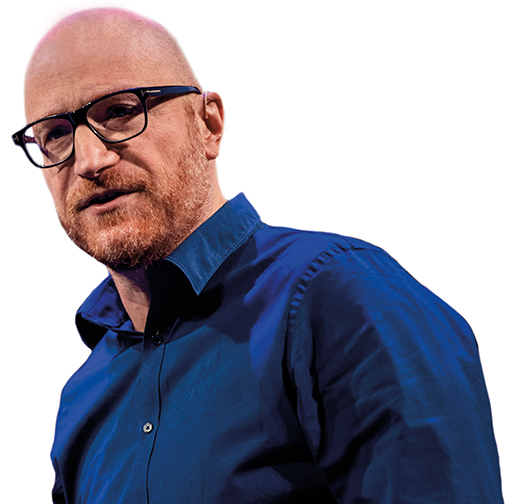The CEO of Backbase, Jouk Pleiter, creator of the people-centric Engagement Banking Platform, discusses the need for European banks to take a platform approach to digital transformation, one that creates a seamless customer journey and lowers their cost to serve.
This article is part of The Banker’s Special Report, Digital transformation across European banking groups, in association with Backbase.
Q: How are European banking groups tackling digital transformation across their geographical footprint?
A: There are two distinct groups. Some are just making isolated technical fixes, such as fixing a broken process or upgrading their mobile banking app, without a long-term strategy in place. Others have a more holistic, or platform, approach, looking at everything from improving account opening and customer onboarding through to expanding their share of wallet and lowering the cost to serve. The latter have realised that patching the siloed nature of their current environment, whether by country, channel or product, is not going to make them more competitive in future, nor create a seamless customer journey, nor improve their cost-to-income ratio.
Further reading
These banks are opting for an enduring transformation programme; they are breaking it down into projects on a year-by-year basis, but implementing them with a single platform approach. Backbase has several clients with multiple operations across Europe that began their digital transformation in one country by solving a few major digital sales issues, for example, in a generic way on a universal platform. One platform means they can reuse and repurpose those elements for other product groups or servicing operations in that country, or use it as a blueprint to roll out across the different countries.
Q: What challenges do incumbents face when trying to create a seamless and uniform digital experience across multiple countries?
A: First, as a technology provider, I think that technology is not the main issue. There are modern solutions available in the cloud from specialist providers, such as Backbase, that will give incumbents an instant technology advantage.
The challenge is utilising this technology, which comes down to digital leadership and ‘unlearning’ the traditional way of doing projects. Many banks believe that this is just another project, like a CRM or call centre project, but this is a mistake because digital is not a project, it is forever and is becoming the core of operations. Think of Amazon or Uber: enhancing customer experience is not a project, it is their core business. So the biggest challenge for banks is to learn how to embrace a digital delivery culture, combining their banking and local market expertise with digital product innovation and delivery expertise.
To survive, a bank has to make digital the core of the business because the tech giants are moving into this space with deep digital delivery DNA and capability sets. Banks need to start to train that digital delivery muscle through continuing innovation and reiteration.
Q: But what is the best way to address banks’ legacy technology?
A: Most banks have too much technology and too many points solutions, such as call centres, ATM, internet, mobile, and so on, which are all siloed. Compare this with Netflix, where there are no channels, it’s just one seamless platform. Banks need to replace all these monoliths over time with more of a platform approach. I believe that platforms are ruling the world and banks need to make a platform play.
The technology challenge is to move away from legacy silos to a holistic customer engagement platform, which doesn’t need to happen overnight. Banks can do it step by step, identifying their top two biggest headaches, solving them on top of a single platform and then expand to the next chapter. Everything will be on the same orchestration platform, which means reuse, a single view of the customer and a seamless cross-channel transition, so customers can move from the web to the mobile to the call centre with ease.
Q: What advice can you give banks to achieve faster return on investment [ROI] in their digital strategies?
A: First, create a value map, with the different lines of business – retail, small and medium-sized enterprises and corporates – as columns and then horizontally all the processes, such as customer onboarding, digital sales, share of wallet and customer servicing.
Second, do a friction/pain analysis and determine the ROI on improving these processes. It could be the end user’s happiness, such as net promoter score, which will improve with a seamless, fast and easy journey, and lead to more sales, increased conversion ratios and lower cost to serve because their processes are simplified and digitised.
Third, start with one or two things and with small agile teams. Within several weeks, you will have made an impact by solving a specific pain point. That creates a reinforcing feedback loop and momentum to add more teams. So, start small but in an intelligent way, to build up confidence and scale up your digital delivery operation.



